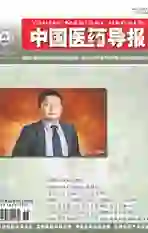双颌前部根尖下截骨术对双颌前突畸形患者咬合关系的影响
2017-07-31解芳徐家杰卢建建
解芳++++++徐家杰++++++卢建建++++++张超++++++杨莉亚++++++李澍源++++++滕利
[摘要] 目的 研究双颌前部根尖下截骨术对双颌前突畸形患者咬合关系的影响。 方法 选择2003年9月~2014年10月中国医学科学院整形外科医院收治的20例双颌前突患者,均接受同期上颌及下颌前部根尖下截骨手术。通过对患者术前及术后进行头影测量,系统地分析此术式对患者咬合关系的影响。 结果 与治疗前相比,患者治疗后的头影测量上切牙牙轴倾斜度(U1-OP)、下切牙牙轴倾斜度(L1-OP)、下中切牙牙轴-下颌平面角(IMPA)、上中切牙突距(U1E-Apog)、下中切牙突距(L1E-Apog)、上中切牙-NA的垂距(U1E-NA)、下牙倾斜度(L1-NB)、下中切牙-NB的垂距(L1E-NB)有所减小,上下中切牙角(ⅡA)、上牙倾斜度(U1-NA)有所增加,差异有高度统计学意义(P < 0.01)。 结论 通过术前模型外科设计,可以确定一部分双颌前突的患者仅需要正颌手术即可同期矫正,明显提高治疗效率,减轻患者经济和身体负担,值得进一步深入研究以进一步普及和推广。
[关键词] 双頜前突;正颌外科;头影测量;模型外科
[中图分类号] R782 [文献标识码] A [文章编号] 1673-7210(2017)06(c)-0130-04
[Abstract] Objective To study effect of anterior apical osteotomy on occlusal relationship in patients with bimaxillary protrusion. Methods From September 2003 to October 2014, 20 patients with bimaxillary protrusion were included in this study, who underwent anterior subapical osteotomy of both the maxilla and mandible in Plastic Surgery Hospital, Chinese Academy of Medical Sciences. In addition, the pre- and postoperative cephalometric radiographs were systematically analyzed. Results After surgery, the levels of U1-OP, L1-OP, IMPA, U1E-Apog, L1E-Apog, U1E-NA, L1-NB, L1E-NB were decreased than before surgery, and the levels of ⅡA and U1-NA were increased than before surgery, with high statistically significant difference (P < 0.01). Conclusion With the use of a precise preoperative model surgical design, orthognathic surgery, a simple and time-saving technique, can be used to correct bimaxillary protrusion with satisfactory postoperative occlusal relationship, and minimal postoperative complications.
[Key words] Bimaxillary protrusion; Orthognathic surgery; Cephalometric; Model surgery
早在20世纪60年代,Taylor等[1]就开始应用根尖下截骨术来治疗双颌前突畸形。20世纪80年代以来,随着正畸技术的发展,根尖下截骨术配合术前术后正畸治疗作为常规方法被广泛应用于成人上颌或下颌前突的矫治[2-4]。然而自1990年以来,传统的生物医学模式逐步转变为社会-生物-心理医学模式[5]。医生在治疗错畸形的同时,尤其是对于外表更加看重的求美者,应更加考虑到患者的心理需求。传统的术前正畸治疗在解决牙列拥挤问题的同时,会在5~9个月的时期内加重牙齿前突的程度,且有时会出现因术前拔牙矫治而呈现特殊的“消瘦面形”,这无疑更加重了患者的不自信。现代社会快节奏的工作生活,使得多数成人患者不能配合长时间的术前术后正畸治疗,而越来越倾向于选择一次性手术解决外形不满意的问题。
随着手术器械的改进、正颌技术的不断成熟、模型外科的发展及CAM/CAD技术的兴起,同期双颌手术逐渐开展并不断完善,越来越多的患者希望选择通过一次手术同期解决双颌前突畸形,免去术前术后长期的正畸过程。在本文中,将分析20例双颌前突患者接受同期双颌根尖下截骨术前后的X线头影测量变化,系统性评价这种改良的方法的临床疗效及对咬合关系的影响。
1 资料与方法
1.1 一般资料
选择在中国医学科学院整形外科医院整形五科2003年9月~2014年10月接受手术的20例双颌前突患者,女19例,男1例,年龄19~41岁,平均为(29.00±6.41)岁。所有患者均接受了同期上颌及下颌前部根尖下截骨手术,其中6例同时行颏部水平截骨前徙术,2例同时行上唇V-Y延长术,1例同时行下颌角弧形截骨术,1例同时行硅胶假体隆颏术。术后测量显示,上颌骨后退骨量平均为(3.73±1.43)mm,下颌骨后退骨量平均为(3.45±1.23)mm,术中平均出血量为(315.00±181.44)mL。
1.2 治疗方法
术前应用头影测量和模型外科预测分析,确定上下颌骨后退的距离,并重点分析手术是否对咬合关系造成严重影响,依据模型外科制作术中咬合导板,并应用Surgicase软件模拟手术过程,并进一步预测术后效果,医患双方达到满意后最终确定手术方案。术中先拔除上下颌第一前磨牙,之后经唇龈沟唇侧5 mm入路,行上颌骨及下颌骨前部根尖下截骨,磨球消耗骨组织以后退上、下颌骨前部骨块,戴用制备的咬合导板,调整至基本正常的咬合关系后,行小钛板钛钉坚强内固定,截骨线两侧牙齿以钢丝辅助固定骨块。经过手术,上颌牙槽及软组织可瞬间后退6~7 mm[6-9]。
1.3 观察指标
根据Wylie[10],Downs[11],Bjrk等[12]提出的方法,所有研究对象在治疗前后均拍摄取正中咬合位时的X线头颅侧位定位片。用MedCeph 4.0软件对每张头颅侧位定位片进行定点和测量。每一个头影测量的点均定2次,如果2次之间的测量角度或长度差值大于1°或者0.5 mm,则要求进行第3遍定点测量,这一次测量值与其他两次相比,异常的数值舍去,然后取平均值。
治疗前后对患者进行头颅X线检查,嘱患者处于正中咬合位,并在唇部完全放松的静息状态下,拍摄头颅侧位的X线片[13-15]。并对术前和术后的头颅侧位X线片的收集、整理、标记,并将所有解剖标记点数字化。之后对数字化的解剖标记点进行头影测量,观察个指标变化情况以评估临床矫治效果。对手术前后X线头颅侧位片分别进行头影测量,所需测量的牙齿相关指标包括:上切牙牙轴倾斜度(U1-OP)、下切牙牙轴倾斜度(L1-OP)、颏角(Id-Pog-Go)、上下中切牙角(IIA)、下中切牙牙軸-下颌平面角(IMPA)、上中切牙突距(U1E-Apog)、下中切牙突距(L1E-Apog)、上中切牙-NA的垂距(U1E-NA)、上牙倾斜度(U1-NA)、下牙倾斜度(L1-NB)、下中切牙-NB的垂距(L1E-NB)。见图1。
1.4 统计学方法
采用SPSS 17.0统计学软件进行数据分析,计量资料数据用均数±标准差(x±s)表示,采用配对样本t检验,以P < 0.05为差异有统计学意义。
2 结果
2.1 治疗前后头影测量的牙齿相关指标比较
与治疗前相比,患者治疗后的头影测量U1-OP、L1-OP、IMPA、U1E-Apog、L1E-Apog、U1E-NA、L1-NB、L1E-NB有所减小,ⅡA,U1-NA有所增加,差异有高度统计学意义(P < 0.01)。见表1。术后随访12~36个月,所有患者颌骨关系正常,牙弓形态及Spee曲线正常,牙齿排列无明显不整,咬合关系正常,颜面外形获得满意的改善。
2.2 典型病例
患者术前微笑时牙龈外露过多,强迫闭口时,下唇下方与颏部间有明显的软组织隆起(图2A、2C)。患者行同期上颌及下颌前部根尖下截骨手术,以及颏部水平截骨前移术,术后2个月患者由凸面型转变为直面型,颜面外形明显改善(图2B、2D)。
3 讨论
双颌前突的人群在中国人中占有很高的比例。高加索人种的面型符合大多数中国人审美标准,而双颌前突的面型对中国人而言显得较为蠢笨[16-18]。所以上下颌前部截骨术在华人中开展得较欧美广泛。传统的术前正畸治疗在解决牙列拥挤问题的同时,会在5~9个月内加重牙齿前突的程度,现代社会快节奏的工作生活,使得多数患者不能配合长时间的正畸治疗,而且对于口外装置的排斥使得正畸拔牙患者的拔牙间隙很难完全用于前牙的内收,如何控制支抗是治疗中的难题。而且正畸治疗主要适用于牙性双颌前突,且后退程度有限(2~3 mm)[19-20]。
术前精确仔细的模型外科设计,对于双颌前突的治疗是至关重要的。术前根据模型外科分析研究,拔牙截骨后退骨段后,如上下牙弓形态良好、协调,前牙覆颌、覆盖基本正常,双侧尖牙-双尖牙区开颌≤1 mm,去骨后尖牙与第二双尖牙间基本无间隙,没有前牙早接触,可不进行术前、术后正畸治疗[9]。
上颌骨前部截骨主要有3种方法:Wassmund,Wunderer和Downfracture法。Wunderer法多应用于前牙需要向后移动者,故本研究中大部分患者应用此方法,在术中拔除双侧上颌第一前磨牙后,行AMSO可后退上颌前部7 mm左右,后退骨块的主要阻力来自于腭骨水平板的后份,术中一定要充分去除该阻力,否则上颌骨前部骨块只能旋转而很难充分后退[21-22]。对于开唇露齿较严重甚至露龈的患者,有时需要上移上颌前部骨块,减小前牙牙弓高度,这时通常采用Downfracture法[23]。原则上上移不应超过2 mm,否则会造成骨切开线两端邻牙平面台阶过大,不利于Spee曲线的协调。有时术中需要适当旋转上颌前部骨块,应注意骨切开线两端邻牙的平面[24]。
术后,U1-OP、L1-OP、U1-NA、L1-NB、U1E-NA、L1E-NB、U1E-Apog、L1E-Apog均有所减小(P < 0.01),说明双颌前部根尖下手术有使患者面部由凸面型变为直面型的趋势,可使咬合关系更加协调稳定。ⅡA是反映上下颌骨前后向凸度的综合指数[4,25],研究发现ⅡA是对功能矫治起主要作用的4项指标之一。
双颌前部根尖下截骨术作为一种操作简单的正颌外科术式,在模型外科及CAM/CAD技术发展的基础上,将更好地应用于双颌前突等错畸形的矫正,并取得咬合关系和面部外形俱佳的疗效。
[参考文献]
[1] Taylor RG,Mills PB,Brenner LD. Maxillary and mandibular subapical osteotomies for the correction of anterior open-bite [J]. Oral Surg Oral Med Oral Pathol,1967,23(2):141-147.
[2] Kim JR,Son WS,Lee SG. A retrospective analysis of 20 surgically corrected bimaxillary protrusion patients [J]. Int J Adult Orthodon Orthognath Surg,2002,17(1):23-27.
[3] Baek SH,Kim BH. Determinants of successful treatment of bimaxillary protrusion:orthodontic treatment versus anterior segmental osteotomy [J]. J Craniofac Surg,2005,16(2):234-246.
[4] Baek SH,Ahn HW,Kwon YH,et al. Surgery-first approach in skeletal class Ⅲ malocclusion treated with 2-jaw surgery:evaluation of surgical movement and postoperative orthodontic treatment [J]. J Craniofac Surg,2010,21(2):332-338.
[5] Uchino BN,Bowen K,Carlisle M,et al. Psychological pathways linking social support to health outcomes:a visit with the “ghosts” of research past,present,and future [J]. Soc Sci Med,2012,74(7):949-957.
[6] Jayaratne YS,Zwahlen RA,Lo J,et al. Facial soft tissue response to anterior segmental osteotomies:a systematic review [J]. Int J Oral Maxillofac Surg,2010,39(11):1050-1058.
[7] AlBarakati SF,Baidas LF. Orthognathic surgical norms for a sample of Saudi adults:hard tissue measurements [J]. Saudi Dent J,2010,22(3):133-139.
[8] Park JU,Hwang YS. Evaluation of the soft and hard tissue changes after anterior segmental osteotomy on the maxilla and mandible [J]. J Oral Maxillofac Surg,2008,66(1):98-103.
[9] Islam S,Ormiston IW. Innovative use of anterior subapical setback combined with bilateral sagittal split osteotomy in patients with obstructive sleep apnoea [J]. Br J Oral Maxillofac Surg,2015,53(1):89-91.
[10] Wylie WL. A quantitative method for the comparison of cranio-facial patterns in different individuals:its application to a study of parents and offspring [J]. Am J Anat,1944,74(1):39–60.
[11] Downs WB. Variations in facial relationships:their significance in treatment and prognosis [J]. American Journal of Orthodontics,1948,34(10):812–840.
[12] Bjrk A,Skieller V. Normal and abnormal growth of the mandible. A synthesis of longitudinal cephalometric implant studies over a period of 25 years [J]. Eur J Orthod,1983,5(1):1-46.
[13] Viazis AD. A cephalometric analysis based on natural head position[J]. J Clin Orthod,1991,25(3):172-181.
[14] Lundstrom A,Lundstrom F,Lebret LM,et al. Natural head position and natural head orientation:basic considerations in cephalometric analysis and research [J]. Eur J Orthod,1995,17(2):111-120.
[15] Choi B,Baek SH,Yang WS,et al. Assessment of the relationships among posture,maxillomandibular denture complex,and soft-tissue profile of aesthetic adult Korean women [J]. J Craniofac Surg,2000,11(6):586-594.
[16] Beak SM,Beak RM. Prifiloplasty of the lower face by maxillary and mandibular anterior segmental osteotomies [J]. Aesth Plast Surg,1993,17(2):129-137.
[17] Yinghong L,Zeyuan Z,Kui Z,et al. Morphometric evaluation of changes in the alveolar bone of adolescents with bimaxillary protrusion via cone beam computed tomography [J]. Hua Xi Kou Qiang Yi Xue Za Zhi,2016,34(1):78-84.
[18] Almutairi TK,Albarakati SF,Aldrees AM. Influence of bimaxillary protrusion on the perception of smile esthetics [J]. Saudi Med J,2015,36(1):87-93.
[19] Tan TJ. Profile changes following orthodontic correction of bimaxillary protrusion with a preadjusted edgewise appliance [J]. Int J Adult Orthodon Orthognath Surg,1996,11(3):239-251.
[20] Bhatia S,Jayan B,Chopra SS. Effect of retraction of anterior teeth on pharyngeal airway and hyoid bone position in class Ⅰ bimaxillary dentoalveolar protrusion [J]. Med J Armed Forces India,2016,72(Suppl 1):S17-S23.
[21] Wang Q,Jia P,Anderson NK,et al. Changes of pharyngeal airway size and hyoid bone position following orthodontic treatment of class Ⅰ bimaxillary protrusion [J]. Angle Orthod,2012,82(1):115-121.
[22] Seo YJ,Lin L,Kim SH,et al. Strategic camouflage treatment of skeletal class Ⅲ malocclusion(mandibular prognathism)using bone-borne rapid maxillary expansion and mandibular anterior subapical osteotomy [J]. Am J Orthod Dentofacial Orthop,2016,149(1):114-126.
[23] Rosenquist B. Anterior segmental maxillary osteotomy. A 24-month follow-up [J]. Int J Oral Maxillofac Surg,1993,22(4):210-213.
[24] Xie F,Teng L,Jin X,et al. Systematic analysis of clinical outcomes of anterior maxillary and mandibular subapical osteotomy with preoperative modeling in the treatment of bimaxillary protrusion [J]. J Craniofac Surg,2013,24(6):1980-1986.
[25] Kim YH,Vietas JJ. Anteroposterior dysplasia indicator:an adjunct to cephalometric differential diagnosis [J]. Am J Orthod,1978,73(6):619-633.
